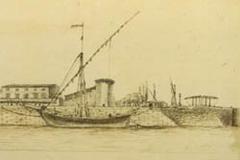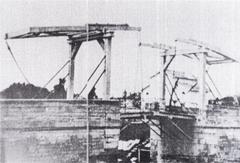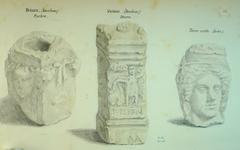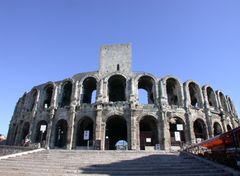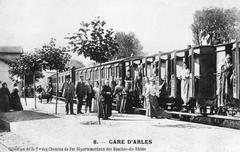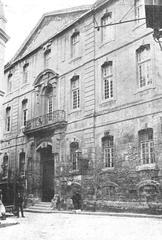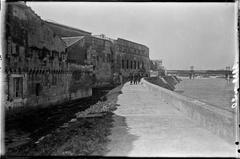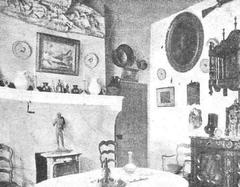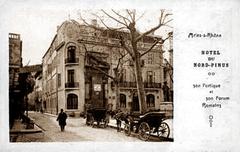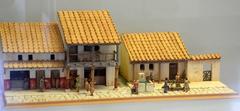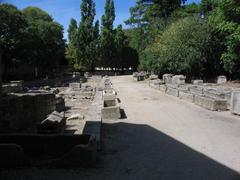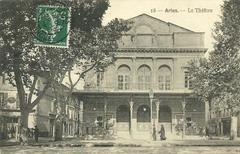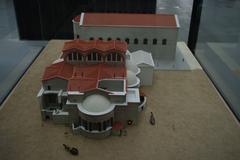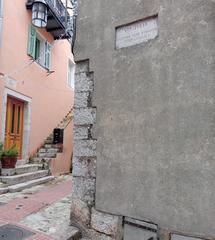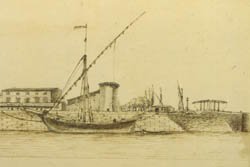
Visiting Pont Van-Gogh in Arles: Hours, Tickets, and Tips
Publication Date: 19/07/2024
Introduction to Pont Van-Gogh
Nestled in the charming town of Arles, France, the Pont Van-Gogh is not merely a bridge but a monument of immense historical and cultural significance. Famously captured by the renowned Dutch painter Vincent van Gogh, this bridge, originally known as the Pont de Langlois, has attracted art enthusiasts and history buffs from around the globe. Van Gogh’s vivid depictions of the bridge, created during his stay in Arles in 1888, are celebrated for their dynamic compositions and vibrant colors, reflecting the essence of the Provençal landscape (Van Gogh Museum). Despite being destroyed during World War II, the bridge was reconstructed in the 1960s, not at its original location but in a more accessible site, honoring the artist who immortalized it in his works (Arles Tourism). This comprehensive guide aims to provide visitors with all necessary information, including the history of Pont Van-Gogh, visiting hours, ticket details, travel tips, and nearby attractions. Whether you are an art lover or a casual tourist, this guide will help you make the most of your visit to Pont Van-Gogh.
Contents Overview
- Introduction
- History of Pont Van-Gogh
- Origins and Construction
- Vincent van Gogh’s Connection
- Destruction and Reconstruction
- Visiting Pont Van-Gogh - Practical Information
- Tickets and Visiting Hours
- Travel Tips and Accessibility
- Nearby Attractions
- Cultural Impact and Preservation
- Special Events and Guided Tours
- Photographic Spots
- Historical Significance in Art History
- FAQ
- Conclusion
History of Pont Van-Gogh
Origins and Construction
The Pont Van-Gogh, originally known as the Pont de Langlois, is a drawbridge located in Arles, France. Constructed in the early 19th century as part of the Canal d’Arles à Bouc, it was designed to facilitate transportation and trade in the region. Named after its operator, Monsieur Langlois, the bridge was a typical example of the Dutch-style drawbridges common in that period.
Vincent van Gogh’s Connection
The bridge gained international fame due to its association with the renowned Dutch painter Vincent van Gogh. Van Gogh moved to Arles in 1888, seeking the vibrant light and colors of the South of France to inspire his work. During his stay, he created a series of paintings and sketches featuring the Pont de Langlois, which he found reminiscent of the bridges in his native Netherlands. One of the most famous paintings from this series is “The Langlois Bridge at Arles with Women Washing” (Van Gogh Museum).
Van Gogh’s depictions of the bridge are celebrated for their vivid colors and dynamic compositions, capturing the essence of the Provençal landscape. These works have contributed significantly to the bridge’s historical and cultural significance, attracting art enthusiasts and tourists from around the world.
Destruction and Reconstruction
The original Pont de Langlois was destroyed during World War II, a common fate for many structures in Europe during the conflict. The bridge was a strategic point and was targeted to disrupt transportation and logistics. After the war, the bridge was not immediately rebuilt, and the site remained in a state of disrepair for several decades.
In the 1960s, recognizing the cultural and historical importance of the bridge, local authorities decided to reconstruct it. However, instead of rebuilding it at its original location, they chose a nearby site that was more accessible to visitors. The new bridge, constructed in the same style as the original, was named Pont Van-Gogh in honor of the artist who immortalized it in his paintings (Arles Tourism).
Visiting Pont Van-Gogh - Practical Information
Tickets and Visiting Hours
The Pont Van-Gogh is accessible to the public year-round. While there is no entrance fee to view the bridge, guided tours may have associated costs. For the most up-to-date information on visiting hours and ticket prices for guided tours, it is recommended to check the official Arles Tourism website.
Travel Tips and Accessibility
- Location: The bridge is located near the town of Arles, which is well-connected by rail and road. It can be easily reached by car or public transport.
- Best Time to Visit: Spring and autumn are ideal times to visit, offering mild weather and fewer tourists.
- Amenities: Facilities such as parking, restrooms, and cafes are available nearby.
- Accessibility: The site is accessible to visitors with mobility issues, though some uneven terrain may be present.
Nearby Attractions
While visiting the Pont Van-Gogh, consider exploring other historical sites in Arles:
- Arles Amphitheatre: A Roman amphitheatre that dates back to the 1st century BC (Arles Tourism).
- Saint-Trophime Church: Known for its Romanesque architecture and stunning cloisters.
- Alyscamps: An ancient Roman necropolis that inspired several of van Gogh’s paintings (Alyscamps).
Cultural Impact and Preservation
Today, the Pont Van-Gogh stands as a testament to the enduring legacy of Vincent van Gogh and his influence on the cultural heritage of Arles. The bridge is maintained as a historical monument, and efforts are made to preserve its structure and surroundings. It serves as a popular tourist attraction, drawing visitors who wish to experience the landscape that inspired one of the greatest artists of the 19th century.
The site is also a focal point for various cultural events and activities, including art exhibitions, guided tours, and educational programs. These initiatives aim to promote the appreciation of van Gogh’s work and the historical significance of the bridge. The Pont Van-Gogh has become a symbol of the artistic heritage of Arles and a key element of the city’s identity.
Special Events and Guided Tours
The Pont Van-Gogh frequently hosts special events and guided tours, providing deeper insights into its history and van Gogh’s connection to the site. Check the Arles Tourism website for a schedule of upcoming events and tours.
Photographic Spots
Photographers will find numerous picturesque spots around the Pont Van-Gogh. The early morning and late afternoon light provide ideal conditions for capturing the bridge’s beauty. Don’t forget to explore different angles to capture the essence of the site as van Gogh did.
Historical Significance in Art History
The Pont Van-Gogh is not only significant for its association with Vincent van Gogh but also for its role in the broader context of art history. Van Gogh’s paintings of the bridge are considered masterpieces of Post-Impressionism, a movement characterized by its emphasis on vivid colors, bold brushstrokes, and emotional expression. These works have been studied extensively by art historians and scholars, contributing to a deeper understanding of van Gogh’s artistic vision and techniques.
Moreover, the bridge has inspired numerous artists and photographers who visit Arles to capture its picturesque setting. The Pont Van-Gogh continues to be a source of inspiration, reflecting the enduring impact of van Gogh’s work on contemporary art and culture.
FAQ
-
Is there an entrance fee to visit Pont Van-Gogh? No, there is no entrance fee to view the bridge, but guided tours may have associated costs.
-
What are the best times to visit Pont Van-Gogh? Spring and autumn offer the best weather and fewer tourists.
-
How do I get to Pont Van-Gogh? The bridge is near Arles, accessible by car or public transport.
-
Are there guided tours available? Yes, guided tours are available. Check the Arles Tourism website for details.
Conclusion
In conclusion, the Pont Van-Gogh in Arles, France, is a site of immense historical and cultural significance. Its association with Vincent van Gogh, its destruction and reconstruction, and its role in art history make it a unique and valuable landmark. The bridge continues to inspire and attract visitors from around the world, serving as a testament to the enduring legacy of one of the greatest artists in history.
Call to Action
Plan your visit to Pont Van-Gogh today and immerse yourself in the rich history and artistic heritage of Arles. For more information, check out related articles on our site, download our mobile app for updates, and follow us on social media.
Sources and Further Reading
- Van Gogh Museum. (n.d.). The Langlois Bridge at Arles with Women Washing. Van Gogh Museum
- Arles Tourism. (n.d.). Pont Van-Gogh. Arles Tourism
- Arles Tourism. (n.d.). Arles Amphitheatre. Arles Tourism
- Alyscamps. (n.d.). Alyscamps. Arles Tourism
- Fondation Vincent van Gogh Arles. (n.d.). Fondation Vincent van Gogh Arles
- Tout Envia. (n.d.). Arles Public Transport. Tout Envia
